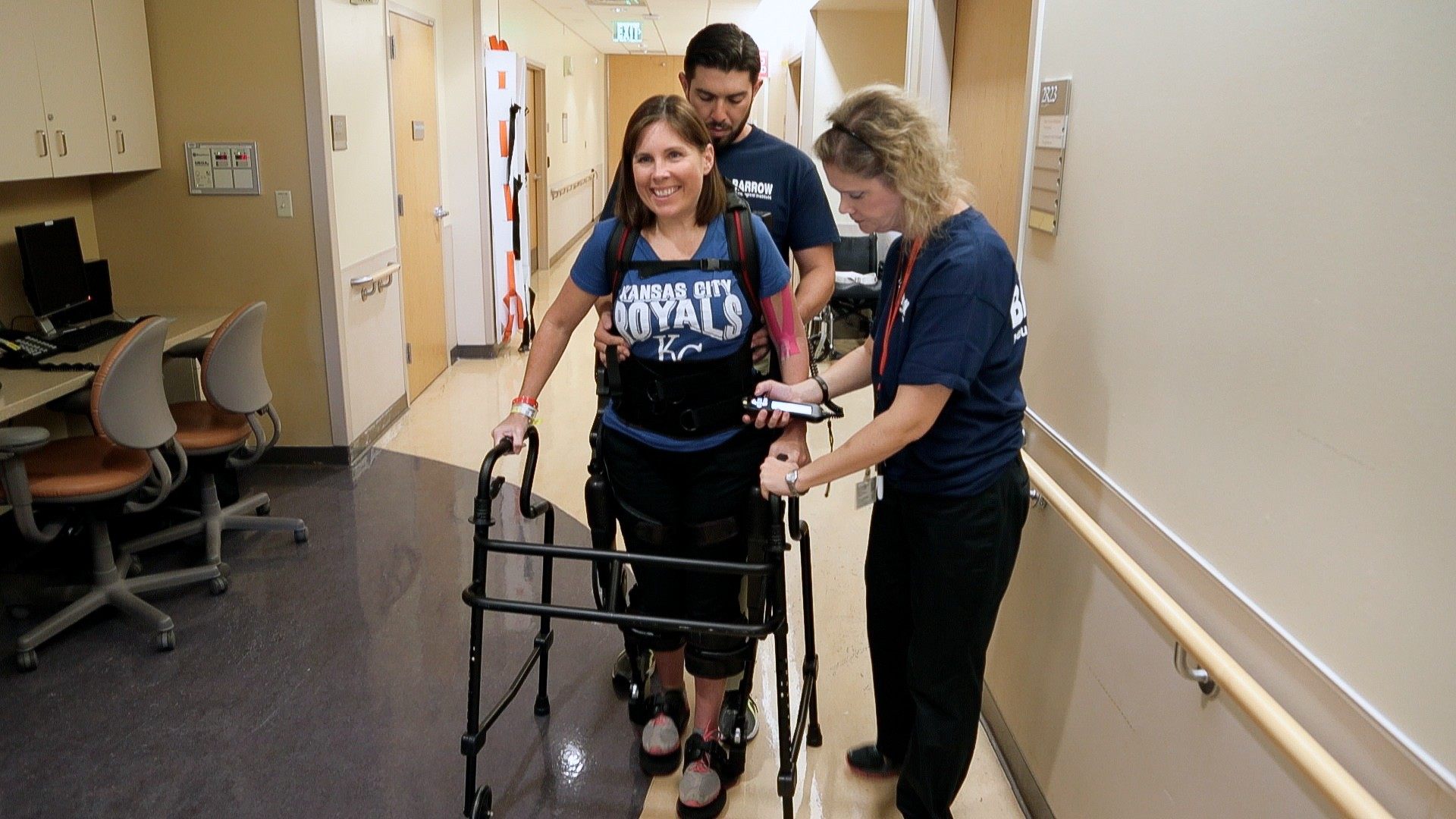
Woman Recovers after Cavernous Malformation Surgery at Barrow
Heather Sixta, 41, and mother of three children, underwent surgery at Barrow Neurological Institute in September where neurosurgeons untangled and removed two malformations filled with an abnormal cluster of blood vessels. Without surgery, Sixta risked a high chance for further brain hemorrhages and permanent paralysis.
Because these types of brain lesions – called cavernous malformations – are risky to remove, Sixta traveled to Barrow in Phoenix to be operated on by renowned surgeon Dr. Robert Spetzler, who has the most experience in treating these often debilitating lesions.
I’ve had a history of suffering from cavernous malformations and I wanted to make sure I had the most skilled surgeon to operate on me so I would have as little deficit as possible.
-Heather Sixta
“I’ve had a history of suffering from cavernous malformations and I wanted to make sure I had the most skilled surgeon to operate on me so I would have as little deficit as possible,” says Sixta.
Following her cavernous malformation surgery, Sixta underwent three weeks at Barrow rehabbing with a breakthrough technology to help her regain her strength and walk. The revolutionary technology, called the exoskeleton, is a bionic suit worn by the patient and enables individuals who are paralyzed or suffer from lower extremity weakness to stand up and walk.
“Barrow not only provided me with the best neurosurgeon in the world to operate on my brain but also an opportunity to rehab with the exoskeleton,” says Sixta. It’s amazing how quickly I’ve recovered as a result. I’m getting stronger every day.”
The road to recovery has been a long one for Sixta. Four years ago, she learned she had eight cavernous malformations in her brain after one ruptured. She underwent surgery in Kansas City but seven of the malformations remained because they were deemed too risky to remove. Sixta contacted Barrow in August to review her case. Dr. Spetzler found that two of the malformations had ruptured, with a high chance of further bleeding and recommended surgery. The remaining five are not active or expected to cause harm.
“Heather’s case was complex based on the number of cavernous malformations she had and the high activity of the two we removed,” says Dr. Spetzler, who is the director of Barrow. “We operated on the riskiest of the malformations since they had ruptured and were likely to cause further severe deficit. I’m very pleased with how well Heather has recovered.”
Sixta recently returned to Kansas City where she continues to undergo neuro-rehabilitation.
Barrow, which is part of Dignity Health St. Joseph’s Hospital and Medical Center, performs more brain surgeries annually than any hospital in the United States and is known for treating the most complex brain and spinal disorders.
